Bosphorus Strait
Introduction
Bosphorus Strait – The sparkling aquamarine of the Bosphorus Strait seems impossible. It makes Istanbul a crossroads in many ways. A crossroads between land and sea, Europe and Asia, Byzantine and Islamic architecture, the past and the present. In every way, this variety and the layers of history piled one on top of the other, blossom across the city. The Bosporus of Istanbul divides the Asian and European Continents. As a result, Istanbul is the only city in the world which is located on two different continents. The narrowest part of the strait is less than half a mile while the widest part is slightly more than two miles. Depth of the strait changes from two hundred to four hundred feet. The Bosporus of Istanbul connects the Black Sea to Marmara Sea. Marmara Sea is connected to the Aegean Sea by the famous World War One battlefield Gallipoli. Because of the strategical location of the Bosporus, it has always been a mouthwatering strait to control. The empires supervised the strait has left deep traces in the history. When we look back, we can see the strait embellished the capitals of the Byzantium and Ottoman Empires; both lasted more than a thousand years.
What Does Bosphorus Mean?
Bosphorus comes from a Thracian word which means “passage of the cow”, deriving from the legend of Io who was one of many lovers of Zeus. According to the Greek legend, Zeus was dating Io which was converted to a cow or a bull when he was almost caught by his wife Hera on duty. While Zeus was looking for a way to meet his lover, Hera sent a fly to irritate bull-converted Io. Deranged, Io ran across the lands and then swam through the Bosporus of Istanbul adorning it with the world famous name. Greeks also called the end of the strait clashing rocks. This must be because of the fast current on the surface of the Bosporus from the Black Sea to the Marmara Sea. Considering the row boats and sails of the ancient times, it must be very challenging for those trading boats to pass the Bosporus Strait. Bosphorus in Turkish is known as Bogazici, meaning “inner strait”. Since the ancient times it held always an important role because of its strategic location, being the only passage from the Black Sea into the Mediterranean, along with the Dardanelles strait. Especially during the Cold War, the straits were crucial for Soviet navy.
Briefly Bosphorus
Short History
The Bosphorus has been a waterway of the highest importance since ancient times. Ulysses passed through. Byzas, who founded Byzantium (later Constantinople, later Istanbul) sailed up and down looking for the perfect place to found his village. In 1452, Mehmet the Conqueror ordered the construction of the mighty fortresses of Rumeli Hisarı(Fortress of Europe) and Anadolu Hisarı (Fortress of Anatolia) so he could control the strait and prevent reinforcements from reaching the besieged Byzantine capital of Constantinople. To the Ottomans it was mostly an obstacle: each spring they had to ship their gigantic armies across the strait from Istanbul for campaigns in Anatolia, Syria and Persia. During World War I, the Bosphorus was the key to the Black Sea and Russia. The Sultan held the key. The Entente powers wanted it. What they failed to get in battle they got by treaty, and British gunboats anchored outside Dolmabahçe Palace.
Recent marine archeological research in the chill, deep waters of the Black Sea has revealed sunken cities on the underwater slopes along the Turkish coast. Geological evidence supports the theory that in ancient times the northern end of the Bosphorus was blocked by earth and rock. The Black Sea had no outlet (like Lake Van today), and its water level was below that of the Aegean Sea, the Sea of Marmara, and the Bosphorus. However, an earthquake destroyed the Bosphorus blockage, releasing a deluge of water from the Bosphorus into the Black Sea, raising the water level and flooding its coastal communities. So it may well be that the Bosphorus is the source of Noah’s flood and the legend of Noah’s Ark! (Mount Ararat is also in Turkey.)
Strategic Importance
The Bosphorus has a huge strategic importance, both economical and military. In recent history alone, twice has the control over the Istanbul strait been at stake: in the Russo–Turkish War (1877–1878) and during World War I when in 1915 Allied Forces attacked the Dardanelles. Currently, according to the Montreux Convention Regarding the Regime of the Turkish Straits of July 1936, the Bosphorus is treated as an international shipping lane, but Turkey does retain the right to restrict the naval traffic of non-Black Sea nations. The Bosphorus shapes Istanbul’s life and culture. It has ever since it became a part of the Ottoman Empire in the 15th century and before, when the city was known as Constantinople under the Byzantine empire. It is said to have paved the way for the discovery of the Americas: following the Ottoman conquest of Istanbul, and the empire’s subsequent control on trade routes, European powers had to look outside the Bosphorus strait for new maritime routes.
Facts and Figures
The Bosphorus strait has played a major role in world trade for centuries. It connects the Black Sea with the Sea of Marmara and eventually, through the Dardanelles strait, with the Mediterranean. The width of the Bosphorus varies from 500 meters (1640 feet) to 3 km (2 miles), its depth from 50 to 120 meters (164 to 394 feet), averaging about 60 meters (197 feet) deep. It is crossed by three bridges and a rail tunnel: the southernmost Bosphorus Bridge (Boğaziçi Köprüsü), the central Mehmet the Conqueror Bridge (Fatih Köprüsü), by the Marmaray Railroad Tunnel, and by the Yavuz Selim Bridge at the Bosphorus’s northern-end confluence with the Black Sea (2016).
The Bosphorus is one of the world’s busiest commercial shipping channels, with some 140 cargo vessels making the 90-minute passage each day (at 7 or 8 knots), carefully navigating the seven precise turns necessary to follow the Bosphorus’s narrow channels and avoid its treacherous currents. About 48,000 vessels transit the straits each year, making this area one of the world’s busiest maritime gateways. Even though by law there are two highly experienced local pilots aboard each vessel during passage, and giant radar towers monitoring all maritime movements in the strait, accidents occasionally happen. On the surface of the Bosphorus the current usually flows from the Black Sea towards the Sea of Marmara. However, at a certain depth, the current flows in the exact opposite direction.
Transit of oil
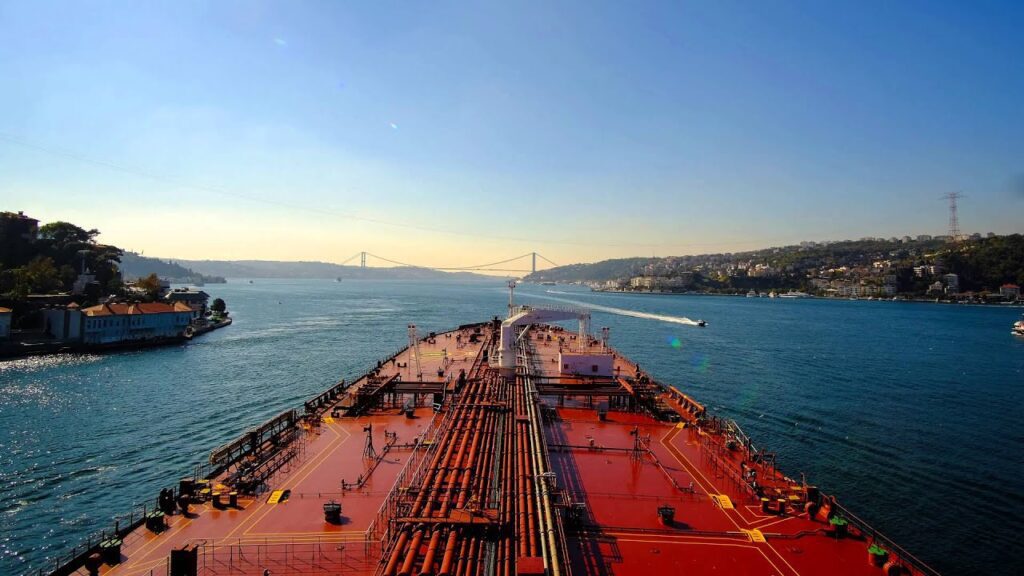
The Bosphorus is one of the world’s most important chokepoints for the maritime transit of oil. Over 3 percent of global supply or 3 million barrels per day, mainly from Russia and the Caspian Sea, passes through the waterway. The route also ships vast amounts of grains from Russia, Ukraine and Kazakhstan to world markets.
Giant Suspended Bridges and Intercontinental Tunnel
There are three suspension bridges on the Bosphorus connecting Europe to Asia (or vice versa). The first one is known as “Bosphorus Bridge” and was opened on 29th October 1973 between Beylerbeyi and Ortakoy neighborhoods. This bridge’s name was changed into “Martyrs of July 15th” dedicated to the victims of the coup attemp on 15th of July 2016. It’s 1074 meters (1175 yards) long between two pillars, has 6 lanes, 165 meters (540 feet) height of piers. The second one is known as “Fatih Sultan Mehmet Bridge” (or FSM Bridge shortly) and was opened in 3rd July 1988 between Anadolu Hisari and Rumeli Hisari neighborhoods. This one is 1090 meters (1192 yards) long, has 8 lanes, and is 65 meters high from the water surface. The FSM bridge is a part of TEM highway (Trans European Motorway) between Ankara and Edirne provinces. The third one is known as “Yavuz Sultan Selim Bridge” (or YSS Bridge shortly) and was opened in 26th of August 2016 between Garipce and Poyrazkoy neighborhoods along the shores of the strait. It’s one of the longest and highest suspension bridges in the World; 1408 meters (1540 yards) long between 322 meters-high pillars, is 59 meters (65 yards) wide with 8 lanes for motor vehicles + 2 lanes for trains. A new highway is built on both sides of the 3rd bridge for intercontinental trade and commuter traffic. All three bridges are tolled which is paid during the passage to the Asian direction only. On the suspension bridges only vehicles with electronic pass system (called OGS or HGS) are accepted, no cash. No bicycles nor pedestrian traffic is allowed on them.
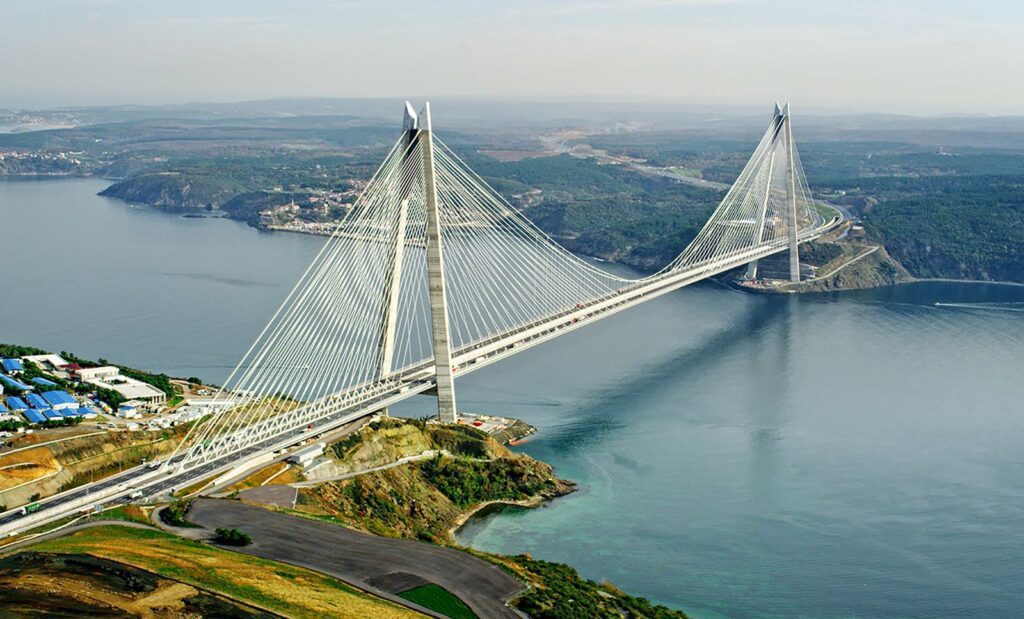
The tunnel between Uskudar and Yenikapi neighborhoods was put into service in October 2013. It’s a big project constructed by Japanese companies, which is delayed for 4 years due to technical reasons and archaeological findings. This tunnel connects only railways / subway between Europe and Asia, not motor vehicles. Another one under the water, a two-level and 5,4 kilometers (3,3 miles) long tunnel runs between Kazlicesme neighborhood in Europe and Goztepe neighborhood in Asia. This project is called “Eurasia tunnel” and was opened in December 2016, used by cars and minibuses only, no motorbikes nor heavy traffic or pedestrians are allowed. More tunnels under the sea are planned in the future.
Fun Facts
The Bosphorus is heavily fished
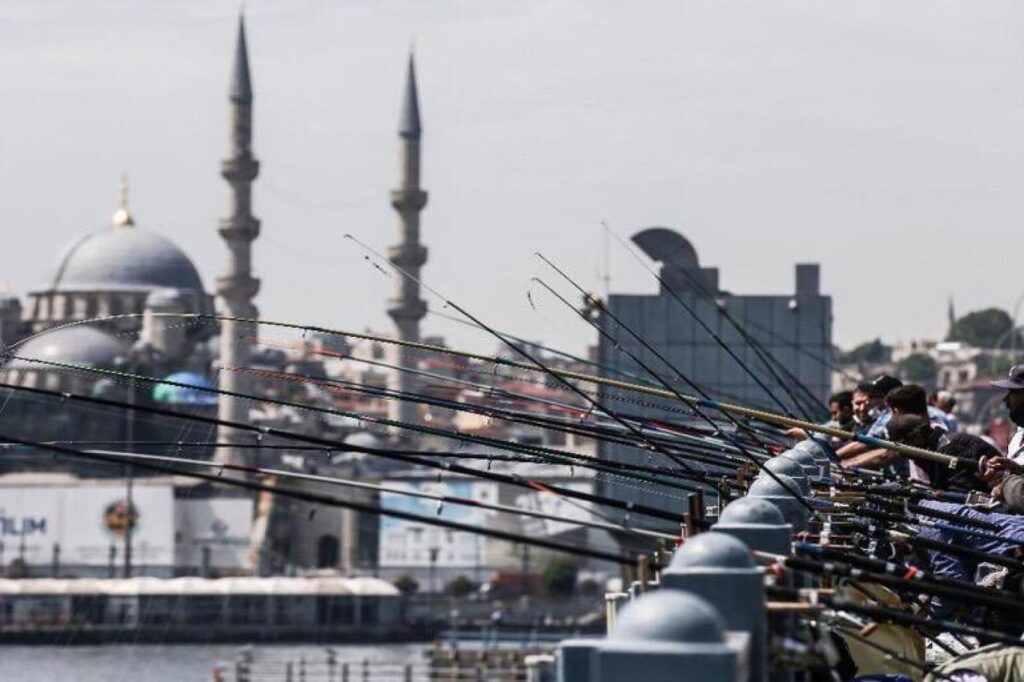
Fish pass through the strait in order to be fully lubricated in the rich nutritious waters of the Black Sea. Making the Istanbul Straits one of the most dynamic regions in the world for fishing. You will often find Istanbulites fishing along the Bosphorus, with buckets filled with their catch of the day. It is also a two-way passage for sea life. It acts as an ecological tunnel between the Mediterranean and Black sea. There are two types of fish in the Bosphorus – migratory and sedentary fish. Bluefish, European pilchard, Atlantic bonito, and needlefish are the main migratory fish that pass through the strait. Horse mackerel, brown meagre, sea bass, red gurnard and black scorpionfish can be caught all year-round.
Once Frozen
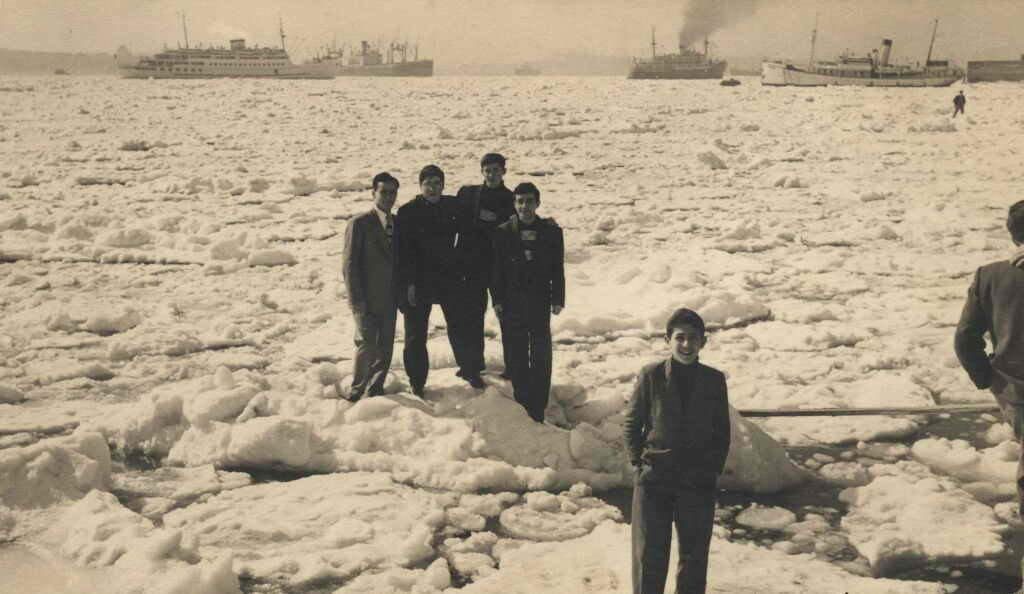
The Bosphorus, it is said, has frozen over many times. However, the most recent one in memory dates back to 1954. Istanbul’s Milliyet newspaper recounts the incident as blocks of ice travelling on the Danube from Romania to the Black Sea, then from the Black Sea to the northern entrance of the Bosphorus, eventually taking over the entire Bosphorus.
A polymath once tried to fly across the strait.
Hezarfen Ahmed Celebi lived in Istanbul during the height of the Ottoman Empire in the early 17th century. According to the Ottoman historian and traveller Evliya Celebi, the polymath constructed a set of wings, replete with genuine bird feathers, and jumped from Istanbul’s Galata Tower on the city’s European side. As the legend goes, Celebi glided across the Bosphorus, landing in the Uskudar district two miles away. If this is accurate, it would make Celebi’s attempt the first intercontinental human flight in history.
Continent Hopping
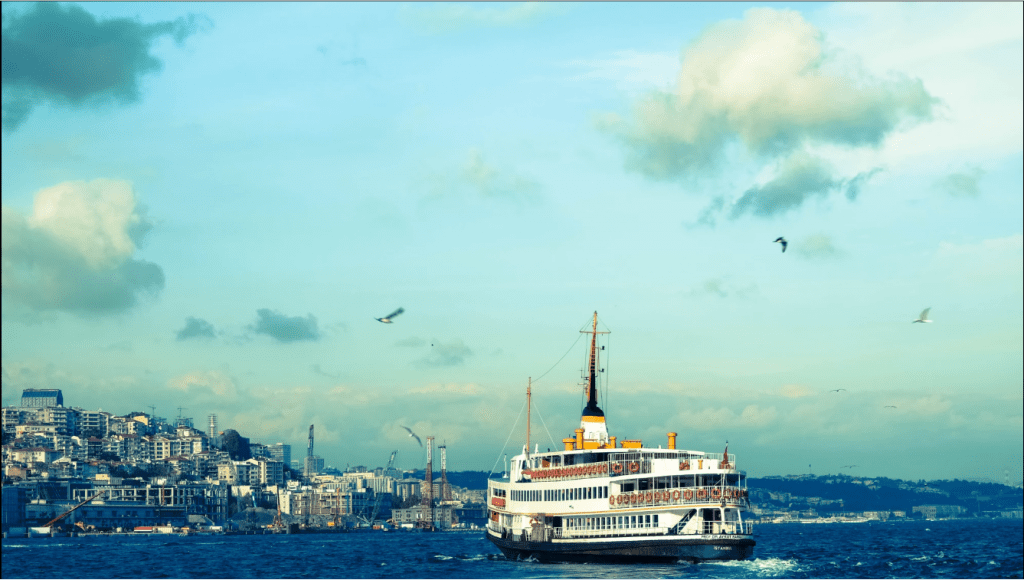
Many Istanbulites take the Bosphorus for granted, continent-hopping by passenger ferries daily to get to work, school or to conduct their daily affairs. But the ferries of the strait are special; they host the daily commuters with the spirit of Turkish hospitality. People on the ferries can find buskers and other performing artists hoping to earn some money while trying to make the cross-continental jaunt a little more pleasant. The creature comforts include freshly-pressed OJ, glasses of soothing, or strong, hot tea and grilled cheese sandwiches. The ferries have been serving Istanbulites in some shape or form since 1854.
The Bosphorus Cross-Continental Swimming Race
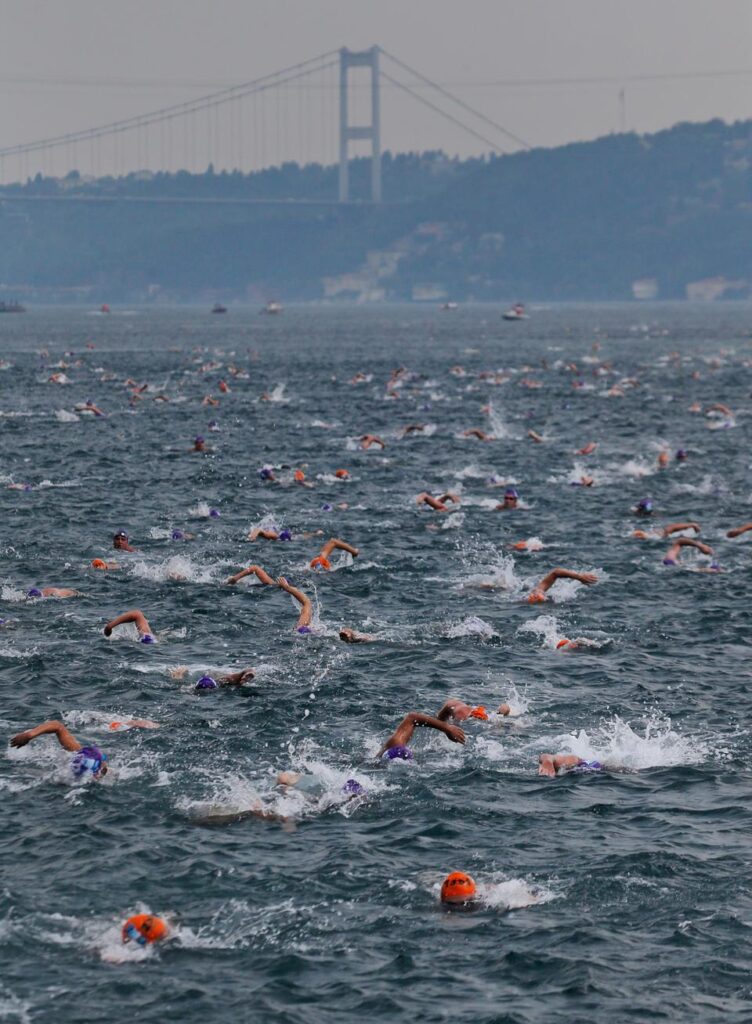
A dip in the Bosphorus is not just for the seagulls and the ducks. The Bosphorus Cross-Continental Swimming Race is one of the most iconic open water swimming events in the world. The strait in Istanbul comes to a standstill as thousands of swimmers cross from Asia to Europe in the world’s only intercontinental swimming race. The course is 6.5 kilometres (4.3 miles), the water is fast, clear and furious with a major current making the swim challenging. The number of swimmers has grown each year since the first race in 1989, when just 64 men and four women took part. In 2018 nearly 2,4000 people competed. Greek Orthodox worshippers also dive into the waters of the Bosphorus once a year. The idea is to retrieve the symbol of the cross in an Epiphany feast day ceremony to commemorate the baptism of Jesus Christ.
The Istanbul Marathon

The Istanbul Marathon is the only marathon in the world to be done across two continents. Runners start the race by crossing the July 15 Martyr’s Bridge giving the participants a marvelous view of the Bosphorus. The route passes many historic and iconic sites such as the Blue Mosque and Hagia Sophia and ends in Sultanahmet in the European part. All in all the race crosses three bridges, one in the Bosphorus and two over the Golden Horn.
How to cruise in the Bosporus of Istanbul?
Join a guided trip
The most comfortable way of doing a Bosphorus cruise in the Bosporus of Istanbul is to join a guided group. This way, you will be able to avoid the time spent on the pre-post organizing and will see also Asian side.
Intercontinental Ferries
Locally called ‘vapur’ (vaporettos) Intercontinental ferries of Istanbul run in between many ports located on both sides of Istanbul. They run frequently from Europe to Asia everyday. The easily accessible ports for a traveler in Istanbul are Eminonu, Karakoy and Besiktas. There are ferries running to the Asian ports such as Kadikoy, Uskudar and Haydarpasa. When you sail in between those ports for a few Turkish Liras, you will be able to see the silhouette of the old city of Istanbul, the Maidens tower and even the façade of the famous Dolmabahce Palace. Since they are ferries for public, a journey will not take longer than 15 minutes but it is the quickest way of seeing the Bosporus for tourists with a very tight schedule.
Çingene Vapuru (Gipsy Vaporetto)
This public ferry line is recommended for travelers with a more flexible itinerary in Istanbul. Sehir Hatlari ferry will take you all the way up to the black sea and bring you back to the starting point in Eminonu which will last around 6 hours. Every day at 10:35 AM, Sehir Hatlari ferry departs from Eminonu and stops by the ports of Besiktas, Uskudar, Kanlica, Sariyer, Rumeli Kavagi and Anadolu Kavagi which is the last stop for about three hours. The ferry will follow the same itinerary on the way back to Eminonu but a taxi, public transportation or private transfer will consume time and money to get back since the Anadolu Kavagi is located on the Asian part of the Bosporus. As a result, we highly recommend to use that 3 hours to see the Yoros Castle and take a lunch break by the sea front restaurants there.
Best Things to See during Bosphorus Day Trips
Rumeli Fortress

Locals and tourists agree that the Rumeli Fortress, offers a truly indescribable view of the city, unlike anywhere else. It is built at the narrowest point of the Bosphorus Strait where defense was would have been the greatest concern to the Sultan. This triumph of fortification, watches over the Bosphorus as it has done since its construction in 1541. The fortress consists of 3 main towers (named respectively after the men that built them), 13 watchtowers and encircled by walls that are 7 meters thick. It can be slightly difficult to access but undoubtedly worth the extra effort!
Bosphorus Mansions (yalı)
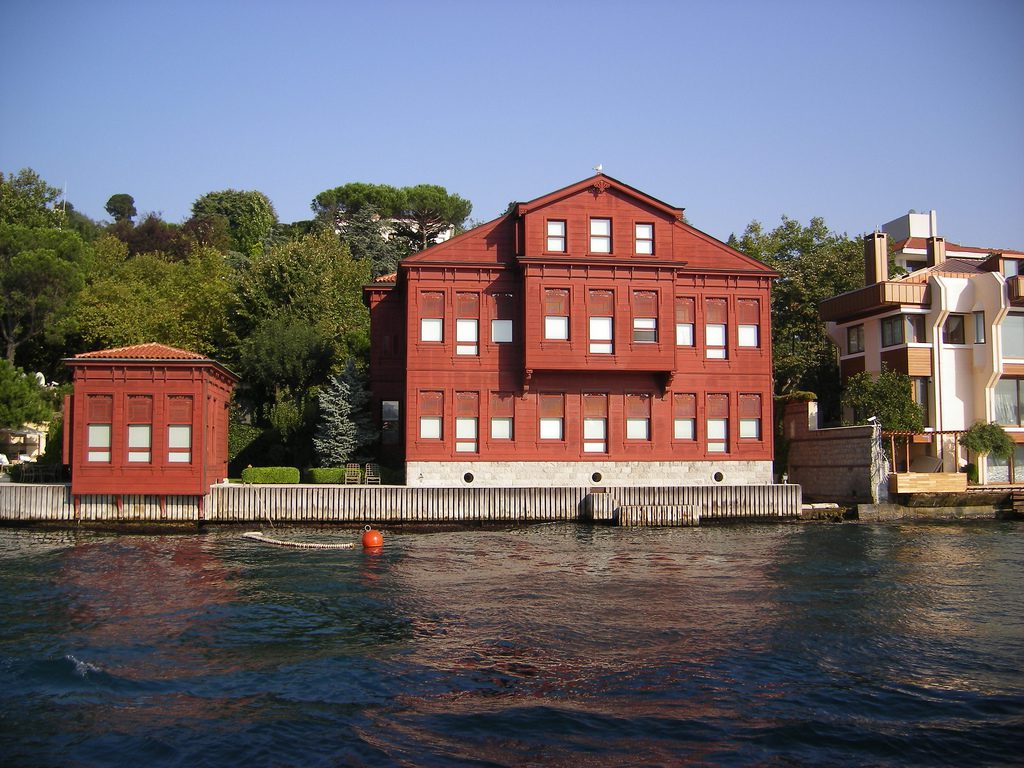
The shores of Bosphorus have always been the city’s most favorite locations for settlements. The trademark of the Bosphorus is the yalı – a house or mansion constructed at the immediate waterside (almost exclusively seaside) in Istanbul. More than 600 finely worked wood constructions, mostly in the style of traditional Turkish houses, are lined next to one another and make the Bosphorus tour a treat for your eyes. The oldest surviving yalı is the one built by the grand vizier Amcazade Köprülü Hüseyin Pasha (of the highly influent Köprülü family) in 1699 in the Kanlıca district, on the Asian shores of the Bosphorus. The most expensive yalı is ‘Erbilgin Yalısı‘ located in Yeniköy, Istanbul. Forbes magazine listed ‘Erbilgin Yalısı‘ as the fifth most expensive house in the world with a price tag of $100 million.
Maiden’s Tower

There are many stories surrounding the origin of the Maiden’s Tower (or Kız Kulesi). The most popular is one that has been spread by word of mouth in Turkey for generations. The story is told within the stone tower thorough large painted murals upon its walls. You will learn the story of the Emperor, the prophecy and the cursed maiden, plus more about the tower’s history if you take the short ferry trip to the tower and go on one of the guided tours from the ground up to the top balcony.
Beylerbeyi Palace

The Beylerbeyi Palace (Turkish: Beylerbeyi Sarayı, Beylerbeyi meaning “Lord of Lords”) is located in the Beylerbeyi neighbourhood of Istanbul, Turkey at the Asian side of the Bosphorus. An Imperial Ottoman summer residence built in the 1860s, it is now situated immediately north of the Bosphorus Bridge.
Dolmabahçe Palace
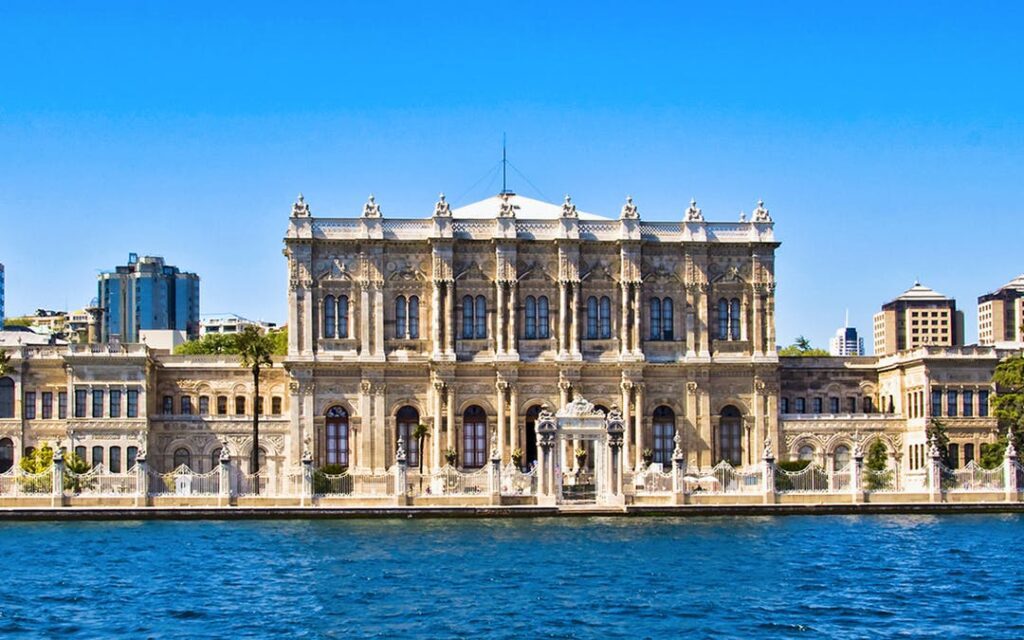
Dolmabahce Palace built in 19 th century is one of the most glamorous palaces in the world. It was the administrative center of the late Ottoman Empire with the last of Ottoman Sultans was residing there.
Ortaköy Mosque
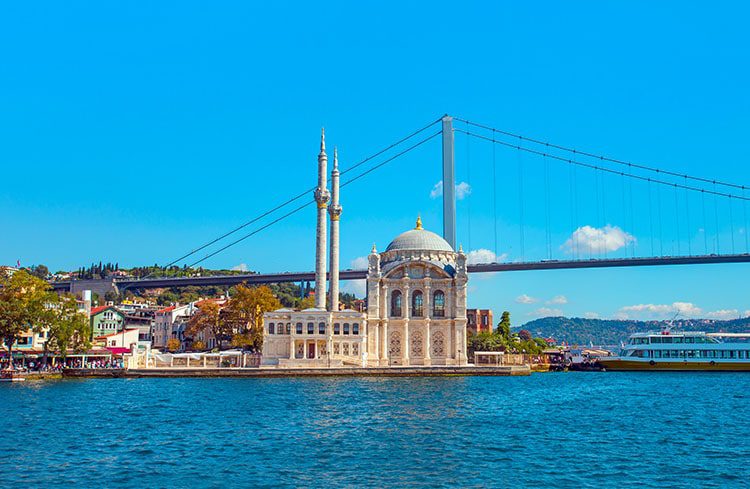
Located just before the Bosphorus Bridge, the Ortaköy Camii, Turkey (Ortaköy Mosque Turkey) has to have one of the most picturesque settings of all of the Istanbul mosques. Indeed, Ortaköy Mosque photos, with the bridge the background are often used to demonstrate that particular Istanbul juxtaposition of traditional and modern.










